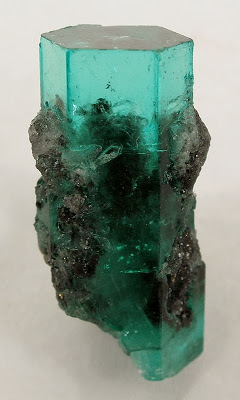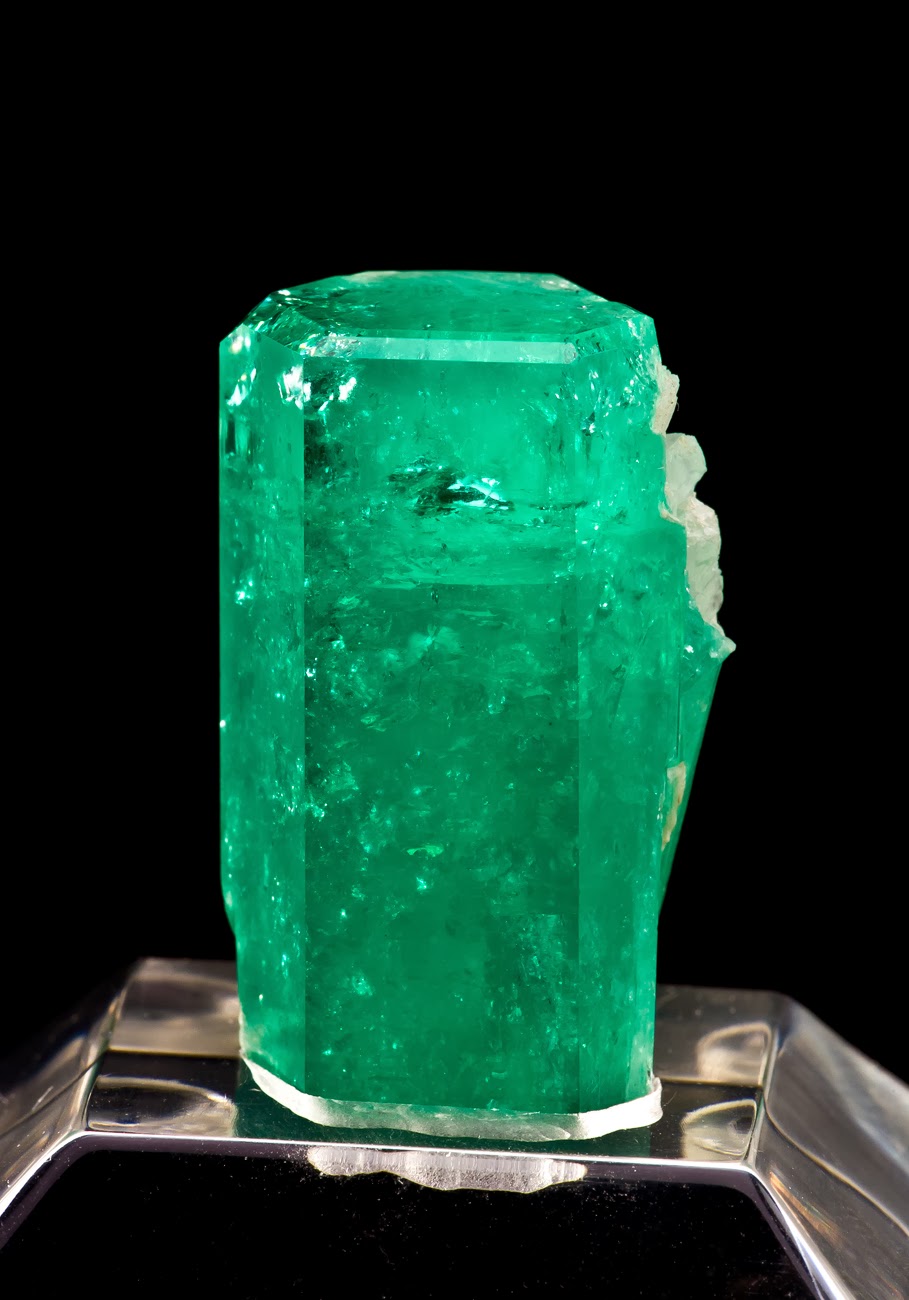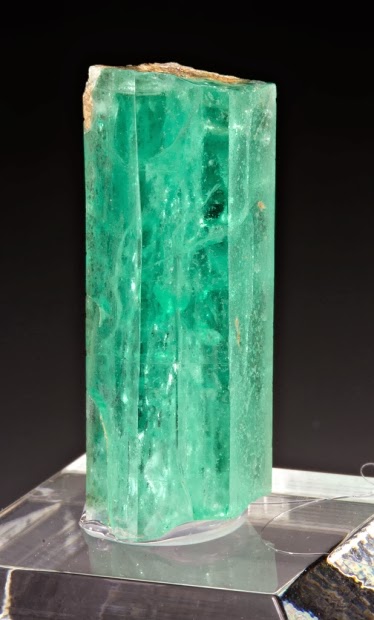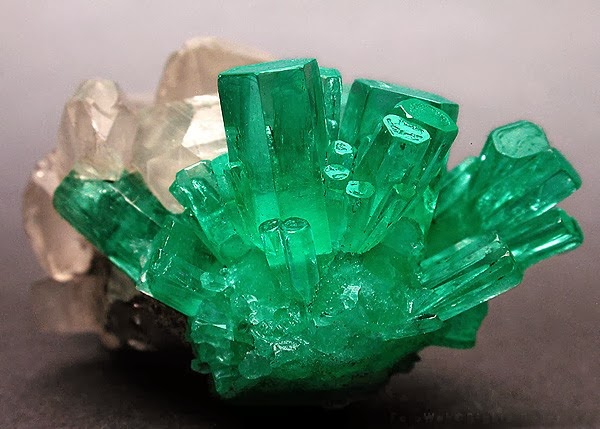
Emerald is a gemstone and a variety of the mineral beryl (Be3Al2(SiO3)6) colored green by trace amounts of chromium and sometimes vanadium. Beryl has a hardness of 7.5–8 on the Mohs scale. Most emeralds are highly included, so their toughness (resistance to breakage) is classified as generally poor.
Etymology
The word “Emerald” is derived (via Old French: Esmeraude and Middle English: Emeraude), from Vulgar Latin: Esmaralda/Esmaraldus, a variant of Latin Smaragdus, which originated in Greek: σμάραγδος (smaragdos; “green gem”).
Properties determining value
Emeralds, like all colored gemstones, are graded using four basic parameters–the four Cs of Connoisseurship: Color, Cut, Clarity and Carat weight. Before the 20th century, jewelers used the term water, as in “a gem of the finest water”, to express the combination of two qualities: color and clarity. Normally, in the grading of colored gemstones, color is by far the most important criterion. However, in the grading of emeralds, clarity is considered a close second. Both are necessary conditions. A fine emerald must possess not only a pure verdant green hue as described below, but also a high degree of transparency to be considered a top gem.
In the 1960s, the American jewelry industry changed the definition of “emerald” to include the green vanadium-bearing beryl as emerald. As a result, vanadium emeralds purchased as emeralds in the United States are not recognized as such in the UK and Europe. In America, the distinction between traditional emeralds and the new vanadium kind is often reflected in the use of terms such as “Colombian Emerald”.
Emerald localities
Emeralds in antiquity have been mined in Egypt since 1500 BCE, and India, and Austria since at least the 14th century CE.
Colombia is by far the world’s largest producer of emeralds, constituting 50–95% of the world production, with the number depending on the year, source and grade. Emerald production in Colombia has increased drastically in the last decade, increasing by 78% from 2000 to 2010. The three main emerald mining areas in Colombia are Muzo, Coscuez, and Chivor. Rare ‘trapiche’ emeralds are found in Colombia, distinguished by a six-pointed radial pattern made of ray-like spokes of dark carbon impurities.
Zambia is the world’s second biggest producer, with its Kafubu River area deposits (Kagem Mines) about 45 km (28 mi) southwest of Kitwe responsible for 20% of the world’s production of gem quality stones in 2004. In the first half of 2011 the Kagem mines produced 3.74 tons of emeralds.
Emeralds are found all over the world in countries such as Afghanistan, Australia, Austria, Brazil, Bulgaria, Cambodia, Canada, China, Egypt, Ethiopia, France, Germany, India, Italy, Kazakhstan, Madagascar, Mozambique, Namibia, Nigeria, Norway, Pakistan, Russia, Somalia, South Africa, Spain, Switzerland, Tanzania, United States, Zambia, and Zimbabwe. In the US, emeralds have been found in Connecticut, Montana, Nevada, North Carolina, and South Carolina. In 1997 emeralds were discovered in the Yukon.
Photos :














